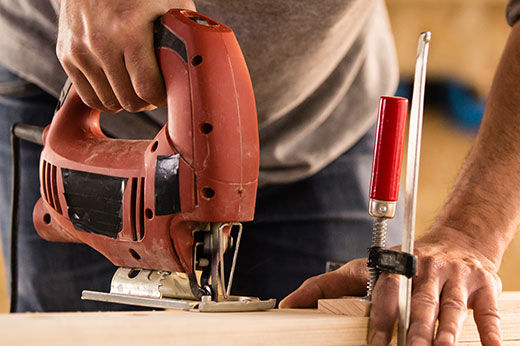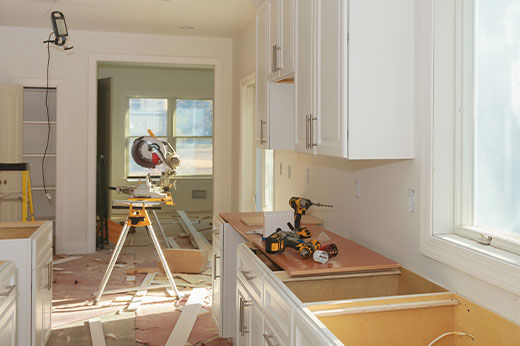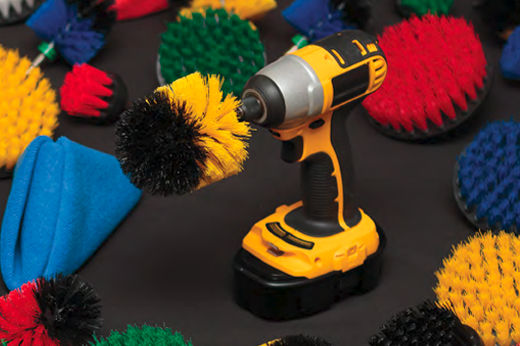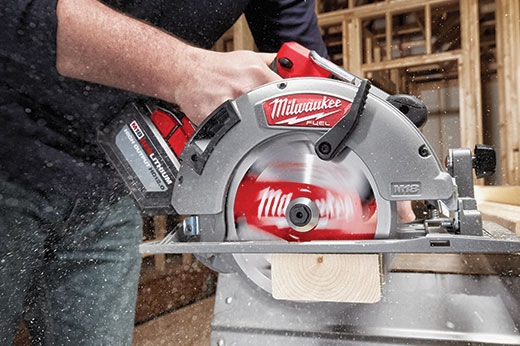How to Use a Wood Router
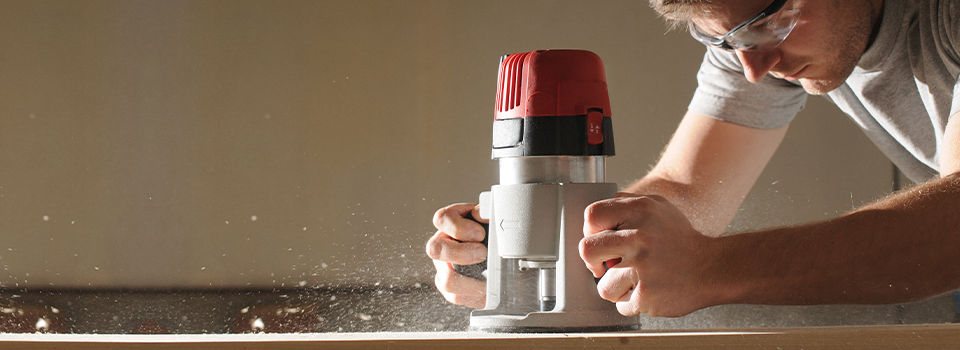
Are you wondering how to use a wood router? If you plan on tackling some woodworking projects, a wood router is a valuable tool to help you make fresh profiles on the edge of a board. Cut a variety of shapes from materials like wood, plaster, and MDF.
If you’ve never used a wood router or if you’re wondering how to use a wood router for a new project, learn more in this easy DIY guide from Do It Best.
What is a Wood Router, and Why Do I Need One?
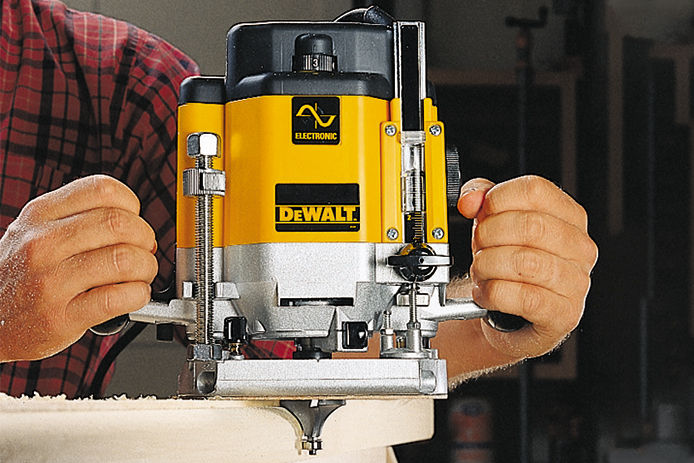
If you’re new to the hobby of woodworking or DIY home improvement, you might wonder how to use a wood router or why you would even need to use a router in the first place.
First, the basics—a wood router is a tool that’s used to make cuts or “hollow out” a piece of wood, plastic, MDF, or even, in some cases, metal. A router can cut grooves, make fancy edges, or help you cut patterns. These patterns are typically used for decorative edging and finishes, giving your wood projects a more professional look.
What else can a router do? Besides cutting fancy edges on side tables and baseboards, routers can also cut flawless dadoes and rabbets. What's a dado, you ask? A dado is a rectangular groove cut into a board to fit another piece of wood into it. A rabbet cut is a step-shaped recess cut along the edge or the face of a piece of wood. But those aren't the only cuts a router can do. Different bits allow you to create decorative picture frames, shoe molding, kitchen cabinets, doors, and edges.
You can purchase a router kit along with specialized router bits to help you get the depth and finish that you want for your project. Routers are portable, small woodworking tools, meaning that they're very versatile and easy to maneuver during use.
If you're building a basic woodworking tool kit, a router is a helpful power tool to invest in. You will find a lot of different applications for your router, and the attractive cuts and edging will make all of your projects look more professional and finished.
Types of Routers
There are two types of routers: a plunge base and a fixed base router. A fixed base router is set in place once you've locked in the bit. A plunge base router lets you plunge the bit up and down in the material. Some routers have both capabilities.
Fixed Base Routers
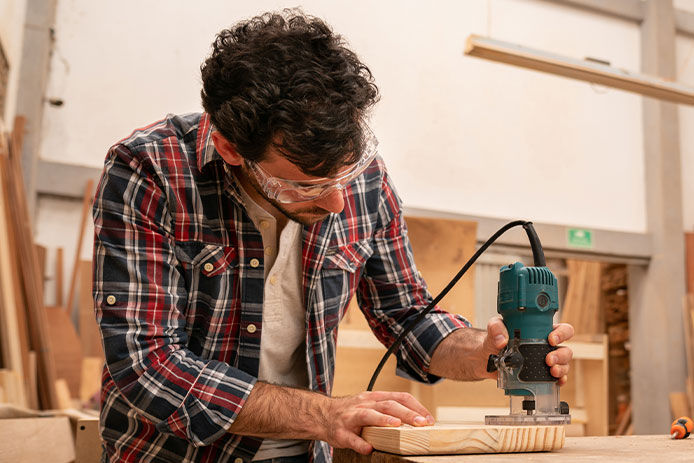
For fixed-based routers, the router bit position stays in place where you set it. So if you set the router to cut ½" depth, the bit will remain at ½" beyond the router's base until you change the setting.
Plunge Base Routers

Plunge base routers allow you to set the depth of the cut. With the router base set on the surface, you can then plunge the bit into your cut. Most beginners prefer a plunge base, as you can typically lock the setting, essentially turning it into a fixed base. A plunge base wood router also protects the bits when not in use, making it a wise choice.
How to Use a Wood Router: Router Safety

Just like that junior high school woodworking class taught you, the first consideration in using a router is safety. Any time you’re using power tools, it’s imperative that you take all necessary precautions to protect yourself and those around you. So what does router safety mean?
Work in a Cleared Space
When you use a router, you want to work in an open space, free of any debris and distraction. Therefore, clear your workspace before you begin any project.
Wear Safety Goggles
Wear the necessary safety goggles or protective glasses each time you use a router or any woodworking tool. Even a tiny piece of wood or minor misstep can result in disastrous consequences for your vision. Eye protection is an absolute must. Similarly, keep both eyes on the project at all times. Turn off the machine before looking away.
Use Ear Protection
Because power tools are loud, hearing protection is also a good idea. You can experience hearing loss with extended exposure to 90 decibels and above, and handheld routers often run at 95 to 115 decibels.
Protect Yourself with a Dust Mask

With any woodworking project, a dust mask is also a necessity. Dust, wood particles, and grinding metals are hazardous and should never be inhaled. Wearing a mask will help prevent these particles from entering your lungs and causing any damage.
Disconnect the Power Supply Before Adjustments
Additional safety precautions include turning off and disconnecting the power supply before you make any changes or adjustments (such as switching out bits). Check to ensure that the bits are correctly installed and tightly secured before you start to use the router.
Secure the Wood and Keep it Free of Foreign Objects
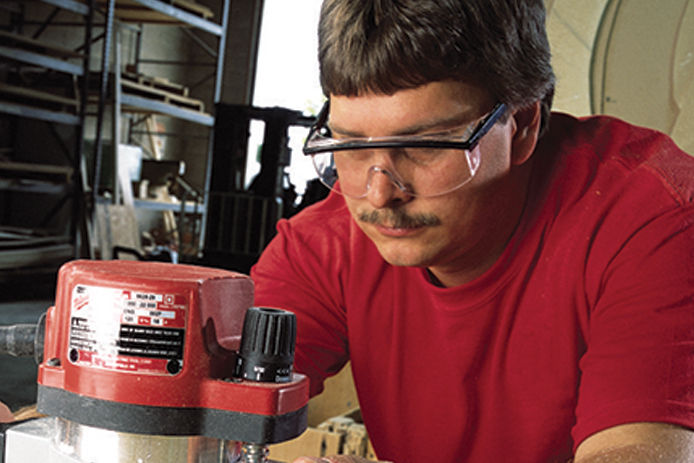
Before cutting into the wood, be certain that you have tightly secured the piece with clamps. Don't ever hold up or hand-support the material as you work because a router can kick back if there is a sudden stop or shift. Inspect the wood for any screws, nails, or other foreign objects. Even small pieces of metal can cause a hazard for you and the router.
Ask For Guidance
If you've never used a router before, it's worth the time and extra step to follow a demonstration or even take an introductory woodworking course. Ask an expert if you have any questions! Not only will you get more use out of a router when you know how to use it properly, but you'll protect yourself (and your project) from damage.
How to Use a Router Safely
If you’re ready to start using your router, there are a few steps to take once you’ve prepared your workspace.
Step 1: Plan your cuts.
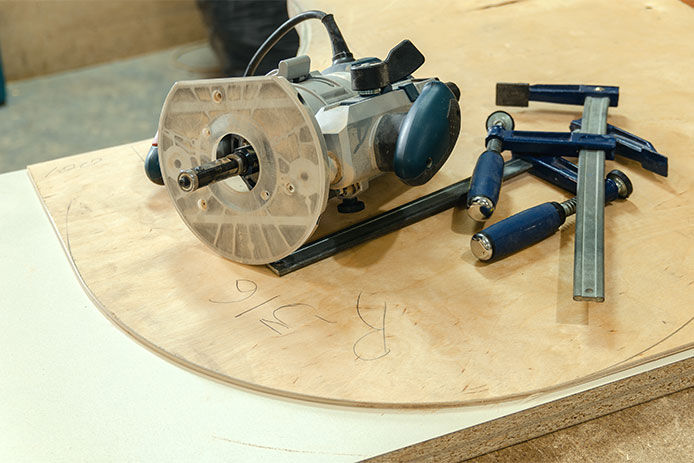
We've all heard the adage, “measure twice, cut once.” When woodworking, it's a good idea to start with a plan. Before diving into a piece of wood with your router, map out your cuts using a template and set the depth of your router bit accordingly. Always do a test cut before routing your workpiece.
Step 2: Secure your work.

Whenever you're making cuts in wood, it's crucial that the wood stays steady and secure while you work. Affix the material to your workbench using a clamp or a non-skid router mat to hold the medium in place. The advantage of a router mat is that it doesn’t need adjustment, allowing you to work continuously.
Step 3: Work with both hands at a steady speed.
Slow and steady is the name of the game when it comes to using a router. Hold the tool firmly, with both hands on the handles. Work at a steady speed—the harder the wood, the slower you will need to go. When going slow with a harder piece of wood, you may need to make several passes to protect the router from kicking back. Keep your feet firmly planted on the ground and stay balanced—don't extend your reach beyond your comfort zone.
Step 4: When in doubt, test.
If you aren't sure about the hardness of the wood or how the bit and router will perform, it's a good idea to test the process first using a piece of scrap lumber.
Step 5: Work in the right direction.

The best practice for handheld wood routers is to work from left to right. This direction will give you the most control over your router. If you’re working with a table-mounted router, it's best to work from right to left. Ensure the bit is always pointed in the planned cutting direction before starting. Again, it's critical to make multiple passes for deeper cuts instead of trying to cut it all at once.
Step 6: Consider a router table.
If you plan to do a lot of woodworking, you can save stress on your hands and arms by investing in a router table. A mounted router on a table offers greater precision, keeping the bit mounted in a fixed position. A routing table also allows you to work faster and with greater confidence.
Woodworking is a fun and fulfilling pastime. If you'd like to get started with beginning woodworking, it's important to invest in the right tools and training. A wood router is a valuable and essential hand tool that isn’t difficult to use. It expands your woodworking capability and allows you to create beautiful, professional finishes and edging.
At Do It Best, we're here to help with all your DIY projects. We have many options and supplies if you're looking for a woodworking router. Visit your local store or shop online today. We make it easy to DIY!
While do-it-yourself projects can be fun and fulfilling, there is always a potential for personal injury or property damage. We strongly suggest that any project beyond your abilities be left to licensed professionals such as electricians, plumbers, and carpenters. Any action you take upon the information on this website is strictly at your own risk, and we assume no responsibility or liability for the contents of this article.
